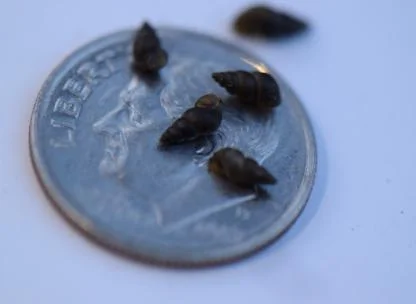Wyoming Game and Fish Shares Updates on Office Hours, AIS Station Access, and Invasive Species Discovery

The Wyoming Game and Fish Department has announced several updates for the Sheridan region, including a temporary office closure, ongoing Aquatic Invasive Species (AIS) inspection operations, and the confirmed presence of an invasive aquatic snail in southeastern Wyoming.
The Sheridan Regional Office will close at noon on July 11 in observance of the WYO Rodeo and is scheduled to reopen at 8 a.m. on July 14. While the office will be closed, the Sheridan AIS watercraft check station—located at the Travel and Tourism Center on 5th Street—will remain open during regular hours, operating 6 a.m. to 6 p.m. on Friday, Saturday, and Sunday.
The department reminds boaters that AIS check stations do not sell AIS decals, which are required for watercraft. These decals can be purchased through authorized license vendors or on the Wyoming Game and Fish website.
Game and Fish continues to urge all watercraft users to stop at AIS check stations, which play a key role in preventing the spread of aquatic invasive species across the state’s waterways.
In related news, the department has confirmed the presence of New Zealand mudsnails in Gelatt Lake and Wheatland Reservoir #3, both located near Laramie. The discovery was made following reports from local anglers who noticed unusual clusters of small black dots on submerged vegetation and rocks.
The initial detection occurred in late April at Gelatt Lake. After receiving a public report, Game and Fish collected samples, which were then analyzed and confirmed by the University of Wyoming. A similar report led to the confirmation of the species in Wheatland Reservoir #3 earlier this summer.
New Zealand mudsnails, though small in size, pose a significant ecological concern. Native to New Zealand, the snails are not a viable food source for fish, as they pass through the digestive system without being digested. Once established in a body of water, the species is considered functionally impossible to remove, making prevention and early detection critical.
The department emphasized the importance of public awareness in helping identify and report invasive species. The recent detections underscore the value of community engagement in protecting Wyoming’s natural resources.
The original story by









The latest news in your social feeds
Subscribe to our social media platforms to stay tuned